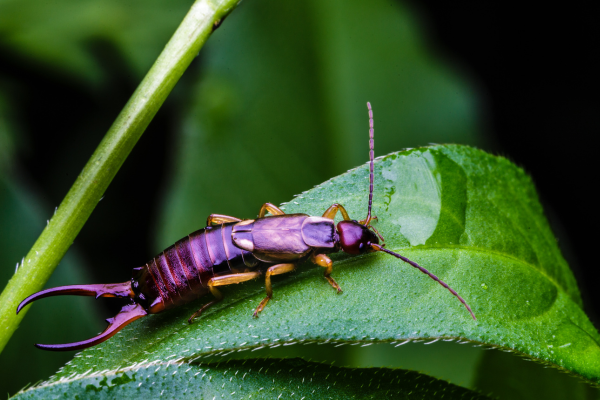Your cart is currently empty!

15 Sep Are Earwigs Harmful? Separating Friend From Foe In The Garden
The world of insects is a diverse and fascinating one, and among the intriguing creatures that inhabit our gardens are earwigs. These curious insects, known for their distinctive pincers at the rear of their abdomens, often evoke a mix of fascination and fear. But are earwigs truly harmful pests, or are they beneficial allies in our gardens? In this blog, we will explore the truth behind earwigs’ reputation, separating friend from foe to better understand their role in the garden ecosystem.
Earwigs, scientifically known as order Dermaptera, are small insects with elongated, flattened bodies and forceps-like cerci at the tip of their abdomens. With over 2,000 known species worldwide, earwigs are found in various habitats, ranging from temperate forests to arid deserts. Contrary to an old myth, earwigs do not crawl into human ears; they are harmless to us and our pets.
Are Earwigs Harmful?
The perception of earwigs as harmful pests stems from their nocturnal behaviour and their occasional presence indoors. While some earwig species may cause minor damage to plants, many play beneficial roles in the garden ecosystem.
The Harmful Aspects Of Earwigs:
- Feeding On Plants: Some earwig species are herbivores and may consume plant matter, including leaves, seedlings, and soft fruits. In high numbers, they can cause cosmetic damage to ornamental plants and crops, leading to aesthetic concerns for gardeners.
- Moisture Attraction: Earwigs are attracted to damp and shady areas, which can lead them to seek shelter indoors during dry or hot weather. Their presence indoors can be unsettling, though they do not pose any threat to humans.
The Beneficial Aspects Of Earwigs:
- Natural Pest Control: Many earwig species are opportunistic omnivores, and this dietary flexibility includes feeding on small insects and other pests. Earwigs are known to consume aphids, caterpillars, mites, and other garden pests, making them valuable allies in natural pest control. Having earwigs in your garden can help keep populations of harmful insects in check.
- Decomposers: Earwigs play a crucial role in the decomposition process. They feed on decaying organic matter, breaking it down into smaller particles, and assisting in nutrient recycling in the soil.
The Balance In The Garden Ecosystem
Like all living organisms, earwigs have a role to play in the complex web of interactions within the garden ecosystem. They are part of the intricate balance that keeps populations of plants, insects, and other animals in check. When the balance is disturbed, such as an overabundance of certain pest species, it may lead to pest outbreaks and damage to garden plants. However, having a diverse community of insects, including earwigs, can help maintain this balance and reduce the need for chemical pesticides.
Managing Earwig Populations
If you find earwigs in your garden and wish to manage their populations, there are eco-friendly approaches you can adopt:
- Tolerate Low Numbers: If earwigs are not causing significant damage to your plants, consider tolerating their presence as they contribute to natural pest control and nutrient recycling.
- Create Hiding Spots: To attract earwigs away from valuable plants, provide alternative hiding spots in the garden, such as overturned clay pots, wooden boards, or cardboard rolls. These shelters can serve as “trap” areas, encouraging earwigs to stay away from more sensitive plantings.
- Physical Barriers: For vulnerable plants or seedlings, use physical barriers like row covers or insect netting to protect them from potential earwig feeding.
- Promote Biodiversity: Attract and encourage the presence of natural predators, such as birds, to help control earwig populations naturally.
Earwigs, often spark concern among gardeners. While they may occasionally cause damage to plants, many earwig species play vital roles in the garden ecosystem as natural pest controllers and decomposers. By understanding the balance they bring to the garden and employing eco-friendly management strategies, we can better appreciate earwigs as beneficial allies rather than harmful foes.
If you earwig population has grown too much, then it’s important that you control your infestation as soon as possible. The Environmental Factor has the perfect solution to help you manage unwanted pests while preserving the delicate harmony of your green paradise: Nema Globe Flea & Chinch Bug Buster. With this product, you can give life back to your plants after they have been ravaged by earwigs. Visit our website today and discover our other natural solutions to manage pests!


